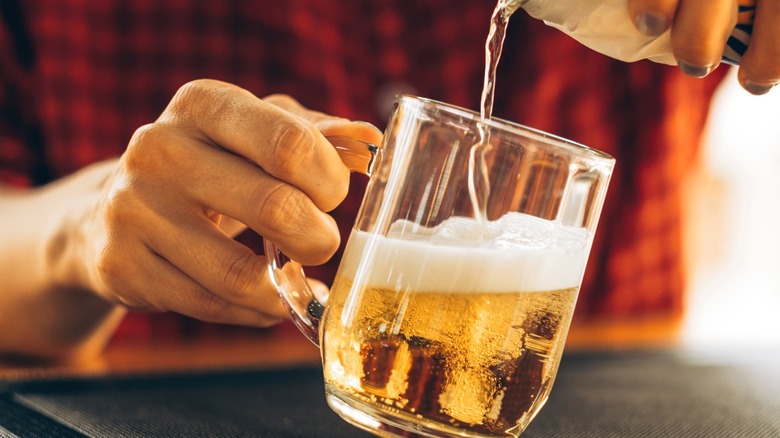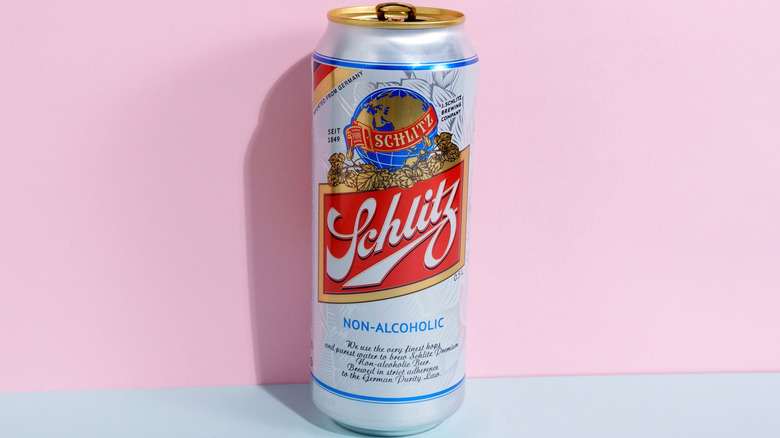The Beer That Once Went Head-To-Head With Budweiser Is Now Almost Impossible To Find
History is littered with the remains of empires that once seemed indestructible. The Roman Empire lasted over a thousand years before its eventual fall, and the dynasties of ancient Egypt lasted even longer. By comparison, the life and death of a company might as well be the blink of an eye — and yet we're still shocked when companies that once seemed like facts of life, like Lehman Brothers or Blockbuster, collapse or fade away. It is the same with Schlitz, which was once the largest beer company in America but is now just a small part of a bigger company's portfolio.
Schlitz, like fellow beer giants Busch and Pabst, was founded by a German immigrant. Joseph Schlitz was a bookkeeper for a Milwaukee-based brewery run by one August Krug. When Krug died in 1856, Schlitz took over his company, renaming it after himself. (Two years later, he married Krug's widow, which must have made for a very weird dynamic.) Although the story that Schlitz gained a foothold in Chicago by sending over thousands of beer barrels in the aftermath of the Chicago Fire is apocryphal, there's no denying that the company did very well for itself in the latter half of the 19th century. Even the death of Joseph Schlitz in a shipwreck off the coast of Cornwall in 1875 couldn't stop the company's ascendency. It looked well on its way to be, if not one of the oldest breweries in the world, then a dependable staple for the foreseeable future.
Schlitz suffered a death by a thousand cuts
The death of Joseph Schlitz didn't cause his brewing company too much trouble — he had written in his will that he wanted to be succeeded by the four Uihlein brothers, who were the late August Krug's nephews. (The Uihleins remain a prominent family, in brewing as well as in conservative politics.) Schlitz continued to thrive into the 20th century, pioneering the now-ubiquitous brown beer bottle to protect its contents from the sun. They managed to make it through Prohibition relatively unscathed, having pivoted to malts and sodas (and even an ill-fated line of candy). So what happened?
Well, a few things happened. In the 1960s, Robert Uihlein, Jr., took over the company, and he wanted to cut costs while still pumping out as much beer as he could. He did this by, among other things, replacing some of the malt barley with corn syrup (a famous enemy of Bud Light) and using extracts instead of genuine ingredients elsewhere. This was a highly unpopular move, and the decision to add a chemical agent to the beer that messed with foam stabilization made matters worse. To top it off, there came a widely mocked ad campaign whose message could half-jokingly be described as "drink Schlitz or I'll kill you." A four-month strike by workers at the Milwaukee Schlitz plant in 1981 put the last nail in the coffin. Schlitz was sold and now exists as a rarely found subsidiary, Pabst, of Pabst Blue Ribbon fame.

